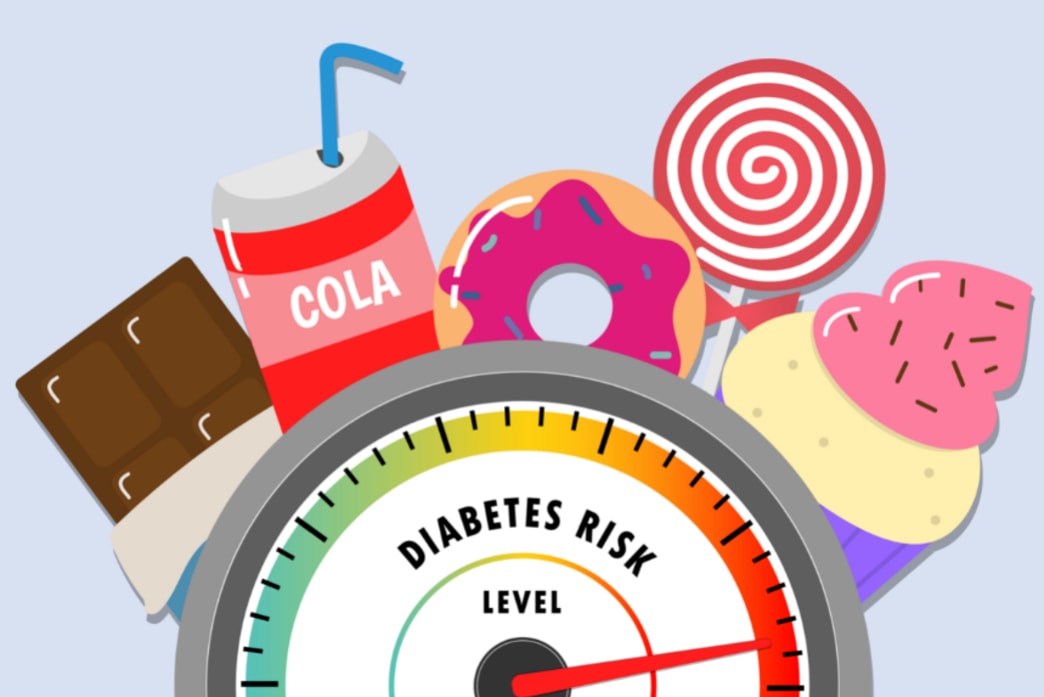

· By Karen Asp
Pre-Diabetes: Are You At Risk?
Reading Time: 4.5 min
Eight years ago, Tanya Norris of Los Angeles began waking up with a headache almost daily. By mid-afternoon, the now 42-year-old fitness professional and fitness competitor was so drained she could barely keep her eyes open. Never mind that she was teaching six fitness classes, logging her workouts and eating healthy, hence her svelte figure. She knew something was wrong, but when she sought help from her doctor, the diagnosis shocked her: pre-diabetes.
Diabetes, however, wasn’t totally off Norris’ radar. After all, her parents and grandmothers were people with prediabetes, so she knew it was in her family history, but she thought her active, healthy lifestyle would protect her. “I always said this would never happen to me,” she says.
Norris, though, isn’t alone. Between 37 and 38 percent of the population has pre-diabetes, according to a new study from The Journal of the American Medical Association. Worse? Roughly 90 percent don’t even know it, reports the Centers for Disease Control and Prevention. Could you be one of them?
Why Healthy Women Are Vulnerable
No doubt you’re familiar with diabetes, a disease in which blood glucose (sugar) levels are above normal. You may have a parent, brother or sister with pre-diabetes, however, blood sugar is higher than normal but not high enough to be diagnosed as diabetes.
Trouble is, though, pre-diabetes, even diabetes for that matter, is largely silent. “There usually aren’t any symptoms, which is why so many people remain undiagnosed,” says Robert Gabbay, M.D., Ph.D., chief medical officer at Joslin Diabetes Center in Boston.
So why worry about pre-diabetes? Namely, because it can lead to devastating health consequences. “This group is at higher risk of not only developing Type 2 diabetes but also cardiovascular disease,” Gabbay says.
Yet don’t think that being fit and skinny gives you an automatic pass out of this group. “Just because you live a healthy lifestyle doesn’t mean you’re not at risk for pre-diabetes,” says Saleh Aldasouqi, M.D., associate professor of medicine and chair of the Division of Endocrinology at Michigan State University. Of course, your healthy lifestyle will protect you more than if you didn’t exercise or eat well, he says. But those habits don’t offer 100 percent protection, and several variables can come into play.
For starters, genetic factors like parents having diabetes as in Norris’ case could raise your risk. Some ethnic groups like Hispanics, African Americans and people from the Pacific Islands are also at greater risk. Having gestational diabetes when pregnant can even make it more likely — about 50 percent of women will get gestational diabetes, and if not managed appropriately, develop diabetes in the next 10 years, Gabbay says — that you’ll develop pre-diabetes.
And that little inch you’re pinching around your belly, even though your body mass index is normal, albeit in the upper limits of normal? Count it as a risk factor. “Even with a normal BMI, intra-abdominal fat, which lies between the organs, can give rise to something called insulin resistance,” Aldasouqi says. Insulin resistance means that your body has trouble using insulin, which can eventually cause your blood sugar to rise and lead to pre-diabetes.
Another risk factor? Skimping on sleep. The longer you’re awake when your internal clock is telling you to sleep, the worse your sensitivity to insulin, which can lead to pre-diabetes and diabetes, according to a study in Current Biology.
Reducing Your Risk
Although pre-diabetes is a silent disease, there can be symptoms associated with diabetes. They include urinating frequently; feeling very thirsty or hungry, even though you’re eating; extreme fatigue; blurry vision; cuts or bruises that take time to heal; and tingling, pain or numbness in your hands and feet, according to the American Diabetes Association. If you notice any of these, get a blood sugar test, usually the A1C, which gives an average of your blood sugar for the previous three months. If, however, you’re not having issues and are at low risk of diabetes, get your blood sugar tested every three years, Gabbay says.
Fortunately, though, if you are diagnosed with pre-diabetes, you’re not destined to develop diabetes. “Consider pre-diabetes a warning to pay closer attention to your health,” Aldasouqi says. With a few tweaks to your lifestyle habits, sometimes even combined with medication, you can eliminate pre-diabetes.
To turn around a pre-diabetes diagnosis or prevent it in the first place, employ two main strategies, Gabbay says: Maintain a healthy weight and remain active, doing cardio and strength training.
If you do have weight to lose — even just a few pounds can help — focus on diet versus exercise. “Although exercise can help you maintain any weight you’ve lost, changes in food intake usually make the most difference in weight loss,” Gabbay says.
Just because you live a healthy lifestyle doesn’t mean you’re not at risk for pre-diabetes.
To that end, load your diet with whole, unrefined foods and make sure you’re getting plenty of fibre, says Cher Pastore, MS, RD, a dietitian in New York City, diabetes educator and author of The 28-Day Blood Sugar Miracle (Page Street Publishing, 2016). People who ate the most amount of fibre — 26 grams per day — had an 18 percent lower risk of developing diabetes versus people who ate less than 19 grams a day, according to a study in Diabetologia. Other studies have found that a diet with 50 grams of fibre a day significantly improves blood glucose levels of people with Type 2 diabetes, so don’t be afraid to eat more fibre, Pastore says, adding that good fibre sources include fruits and vegetables, beans and legumes, and whole grains.
Also, watch for hidden sources of sugar — think salad dressings, ketchup and bread — because too much-added sugar can spike your blood sugar, Aldasouqi says. Finally, prioritizes sleep, logging eight to nine hours daily, he adds.
Meanwhile, Norris is managing her pre-diabetes with a healthy diet — she eats six meals a day, avoids high-sugar foods like bananas, and focuses on whole foods like berries, almonds and quinoa — and regular exercise, all of which is staving off a diabetes diagnosis. As she says, “My doctor believes exercise is probably the reason I don’t have diabetes and don’t have to take medication.”
Written by Karen Asp for Oxygen Magazine and legally licensed through the Matcha publisher network. Please direct all licensing questions to legal@getmatcha.com.
